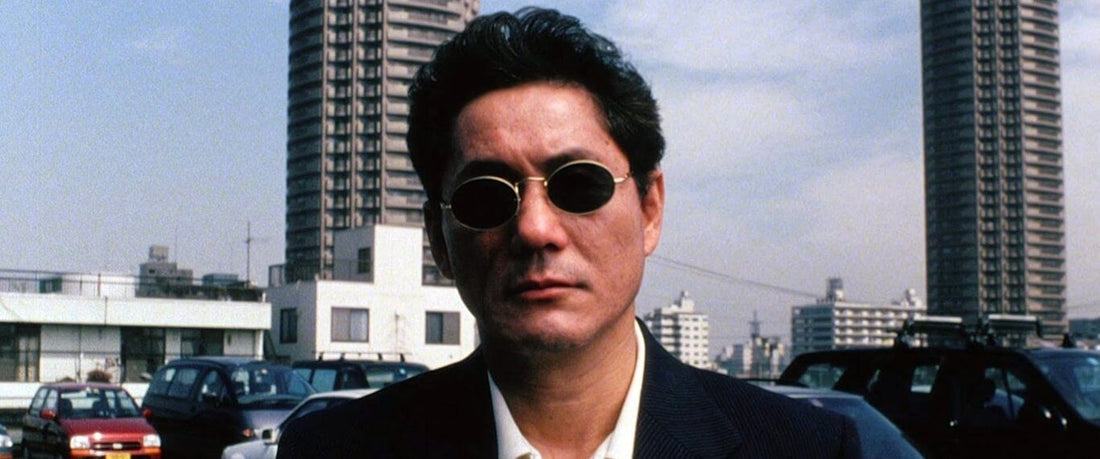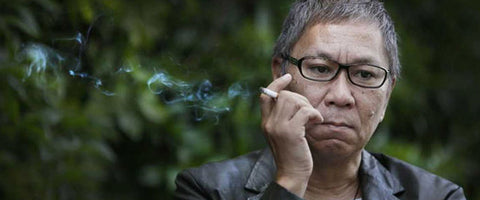
Contemporary Japanese Directors You Should Know
Japanese Directors
Japanese cinema has a history that spans over a hundred years. As of 2010, it is the fourth largest film industry by film production.
With notable and legendary Japanese film directors like Akira Kurosawa, Yasujirō Ozu and Akio Jissôji who shaped the country’s film industry and contributed works that influenced even western cinema—it’s no doubt that Japanese films continues to evolve.
Kiyoshi Kurosawa

Kiyoshi Kurosawa is known for his contributions in the horror genre. But ironically, his films that I have watched are not from the horror genre—namely, Bright Future (2002) and Tokyo Sonata (2008) which showcases his versatility as a director as he stepped out of his horror niche. The film went on to win the Jury Prize of the Un Certain Regard section in the 2008 Cannes Film Festival.
But he first gained recognition for his 1997 film, Cure, a psychological thriller film with elements of film noir and horror. Kurosawa’s style (at least from his non-horror work) tend to focus on the natural—taking something sentimental and making it feel unsentimental but still with equal, provoking impact. In 2016, he returns to the horror genre with Creepy.
Standouts: Bright Future (2002), Tokyo Sonata (2008), Cure (1997), Seventh Code (2013), Journey to the Shore (2015)
Shunji Iwai

Shunji Iwai started off directing TV dramas and music videos. In 1995, he went on to direct his first feature length, Love Letter. Iwai’s films often tell coming-of-age stories, adding a sense of nostalgia; hence, emitting innocence and purity reinforced by his use of sun flares and mellow colors and sometimes handheld cameras. Notable examples include his debut film, Love Letter (1995), Hana and Alice (2004) and All About Lily Chouchou (2001). But his most critically successful film is Swallowtail Butterfly (1996), shot using a handheld camera, which went on to win Best Film in the 1997 Japanese Academy Awards.
Iwai made his English film debut in 2011 for Vampire—his first horror-thriller film. Despite his notable coming-of-age films, Iwai also touches on marginalized people as seen in Picnic (1995), where he touches on the story of mentally ill patients. Iwai returned to feature length after 12 years in A Bride for Rip Van Winkle (2016), this time exploring human connection
Standouts: Swallowtail Butterfly (1996), Picnic (1995), All About Lily Chouchou (2001), A Bride for Rip Van Winkle (2016)
Hirokazu Kore-eda

Hirokazu Koreeda is known for his films that depict family much like his predecessor and whom critics often compare him to, Yasujiro Ozu. Given his lumiere style, he is also being compared to Taiwanese directors, Hou Hsiao-hsien and Tsai Ming-liang (GOODBYE DRAGON INN).
But Koreeda’s style lies not only in how he explores family relationships but how he depicts such domestic realities often with a young cast. For Nobody Knows (2004), all of the child actors were unknowns. And most of the acting were done naturally, reflecting the film’s ala-documentary style. One of the actors, Yuya Yagira (12 at that time) won Best Actor at 2004 Cannes Film Festival for his role as the eldest son, Akira.
Koreeda also makes use of music as a bridge and the focus on little details that make recurring appearances with symbolic meanings. Koreeda’s other works like I Wish (2011), Like Father Like Son (2013) and Our Little Sister (2015) all explored familial themes and camera POV from the young actors.
Standouts: Still Walking (2008), Nobody Knows (2004), Like Father Like Son (2014), Our Little Sister (2015).
Sion Sono

Sion Sono is being regarded as one of the most recognizable and celebrated Japanese directors today. His style, like Takashi Miike (below), is unconventional, provocative and subversive but at the same time, stirs discussion and receives critical acclaim. His 4-hour epic, Love Exposure (2008) is his most accomplished work, the first film in the “Hate” trilogy that is followed by Cold Fish (2010) and Guilty of Romance (2011). Love Exposure made Sono won Best Director at the 2010 Asian Film Awards.
Often, Sono’s work have elements of dark comedy and mocks a certain social problem. But at times, it can just be pure entertainment like Tokyo Tribe (2014). Throughout his career, Sono also likes recurring collaborations with actors such as with Fumi Nikaido (in Himizu, 2011 who is the first Japanese to receive the Marcello Mastroianni Award for Best New Young Actor and Actress at the 68th Venice International Film Festival, together with Shota Sometani, Why Don’t You Play in Hell, 2013) and with Denden (Be Sure to Share, 2009 and Land of Hope, 2012).Sono’s strongest feat is his narration—combining different elements (that otherwise seem like they can’t go hand-in-hand) and make them connect with underlying symbolisms. A versatile director, his films range from musical, action, comedy to extreme sexual perversion.
Standouts: Love Exposure (2008), Himizu (2011), Why Don’t You Play in Hell (2013), Suicide Club (2001)
Takashi Miike

Takashi Miike is no doubt, one of the most hard-working directors out there. He has over ninety works under his belt since his debut in 1999. In the years 2001-2002, he has directed over fifteen films. Miike remains as a highly controversial director given that his films’ subject are always extreme, bizarre and unconventional. One of his most famous works, Ichi the Killer (2001) which is about a sadomasochistic yakuza enforcer remains a controversial film because of the extreme violence portrayed.
Others like Visitor Q (2001) has extreme sexual perversion including incest; hence, is considered a cult film by many. To me, Miike’s films have always been either a hit-or-miss. Nevertheless, Miike’s contributions to the Japanese cinema given his wide range of films from horror, family drama and comedy has made him a very prolific and daring director.
Standouts: Ichi the Killer (2001), Visitor Q (2001), Audition (1999), Crows Zero (2007)
Tetsuya Nakashima

Tetsuya Nakashima is known for exploring characters and stories at their most extreme and lowest. The most notable example would be Confessions (2010), which was shortlisted for the Best Foreign Language Film category in the 83rd Academy Awards. But perhaps his most famous work is Kamikaze Girls (2005) for which he won Best Director at the 2005 Yokohama Film Festival. He also tends to explore the generational clash and rebellious escape of his young characters. Notably, most of his films also have females in the leading roles.
Standouts: Confessions (2010), Kamikaze Girls (2005), Memories of Matsuko (2006), The World of Kanako (2014).
Isao Yukisada

Isao Yukisada’s style echoes that of Shunji Iwai’s, although it shouldn’t come as a surprise. Yukisada served as the assistant director for Iwai’s Love Letter (1995), April Story (1998) and Swallowtail Butterfly (1995). Perhaps, one of Yukisada’s most notable work is Crying Out Love in The Centre of the World (2004), based on a novel, which also launched the careers of Masami Nagasawa and Mirai Moriyama. His other recognized feature is Go (2001), also based on a novel—tells the story of a zainichi Korean.
It was one of the first films at that time to explore racial identity, especially one that challenges the Japanese identity. The film won Best Cinematography, Best Director, Best Editing, Best Lighting and Best Screenplay at the 2002 Japanese Academy Awards (and Best Supporting Actress/Newcomer of the Year/Best Actor for the film’s two main leads). And Best Film at the 2001 Hochi Film Awards (including Best Actor for Yosuke Kubozuka and Best Supporting Actress for Kou Shibasaki)and Best Director at the Blue Ribbons Awards. Like Iwai, Yukisada’s style focuses on coming-of-age, youth struggles in a way that takes it time, letting their experiences flutter through the screen. He also often adapts novels into films.
Standouts: Go (2001), Crying Out Love in the Centre of the World (2004), Into the Faraway Sky (2007), Pink and Grey (2016).
Nobuhiro Yamashita

Nobuhiro Yamashita’s career took off when his graduation film, Hazy Live (1999) won the Theatre Competition Grand Prize at the 2000 Yubari International Fantastic Film Festival. He went on to work on his next film, No One’s Ark in 2003. In the the 32nd Hochi Film Award in 2007, not one but two of his films, A Gentle Breeze in the Village and The Matsugane Potshot Affair made him won Best Director.
Yamashita’s films have no grand plot to keep it moving, instead it takes on simple narration and tell that story to us. He creates his own mood and tone—like in Linda Linda Linda (2005) and explores human experience.
Standouts: Linda Linda Linda (2005), Over the Fence (2016), A Gentle Breeze in the Village (2007), Tamako in Moratorium (2013).
Yoji Yamada

Yoji Yamada is a critically acclaimed director both in his native Japan and internationally. Well-known for his Otoko wa Tsurai yo (It’s tough being a man) film series and the Samurai Trilogy. Yamada won Best Director four times at the Japanese Academy Awards for his films, The Yellow Handkerchief (1977), My Sons (1991), A Class to Remember (1993) and The Twilight Samurai (2002) which was nominated at the 76th Academy Awards for Best Foreign Film.He also won Director of the Year at the Japan Academy Awards three times. Besides, his Tora-san series and Samurai Trilogy, Yamada’s film focuses on simple rural/village life instead of contemporary/metropolitan Tokyo.
Standouts: Tora-san series and the Samurai Trilogy
Shohei Imamura

Shohei Imamura, the oldest director in the list, is the only Japanese director to win two Palme d’Or awards (for The Ballad of Narayama, 1983 and The Eel, 1997). Imamura began as an assistant to legendary filmmaker, Yasujirō Ozu—beginning his film career. Takashi Miike was a student in a school that Imamura founded. Like Ozu, Imamura’s films explore Japanese society particularly on the marginalized communities and the relationship it has with the higher class, seeing himself as a cultural anthropologist.
Three films launched Imamura as one of the leading figures of the Japanese New Wave cinema. These are Pigs and Battleships (1961), The Insect Women (1963) and Unholy Desire (1964) which showed heavy anti-American messages. Because of that, the studio he was working for haulted him from making films for two years. He established in his own independent studio in 1965 (Imamura Productions) to stop further interference on his work and celebrate creative freedom.
Standouts: The Ballad of Narayama (1983), The Eel (1997), Black Rain (1985), Vengeance is Mine (1990)
_
Original post by Jianne Soriano for Affinity Magazine
1 comment
I missed Hideaki Anno, in my point of view, he is one of the most important director in the contemporary japanese cinema. Not just for Evangellion, but for Love & Pop (1998) and Shiki-Jitsu (2000).